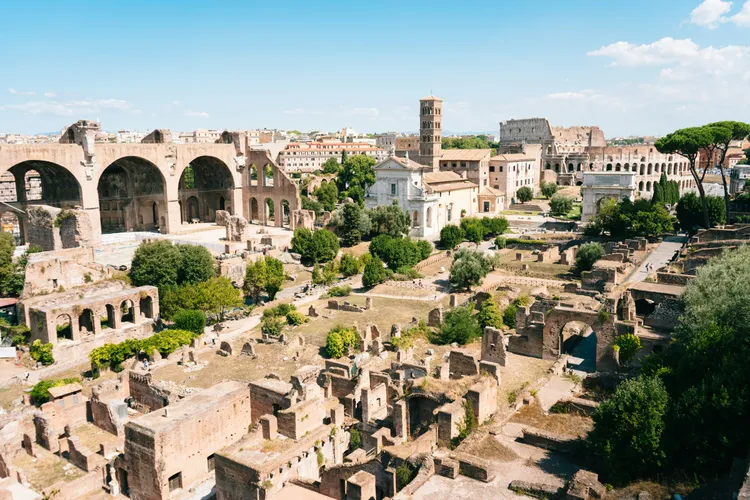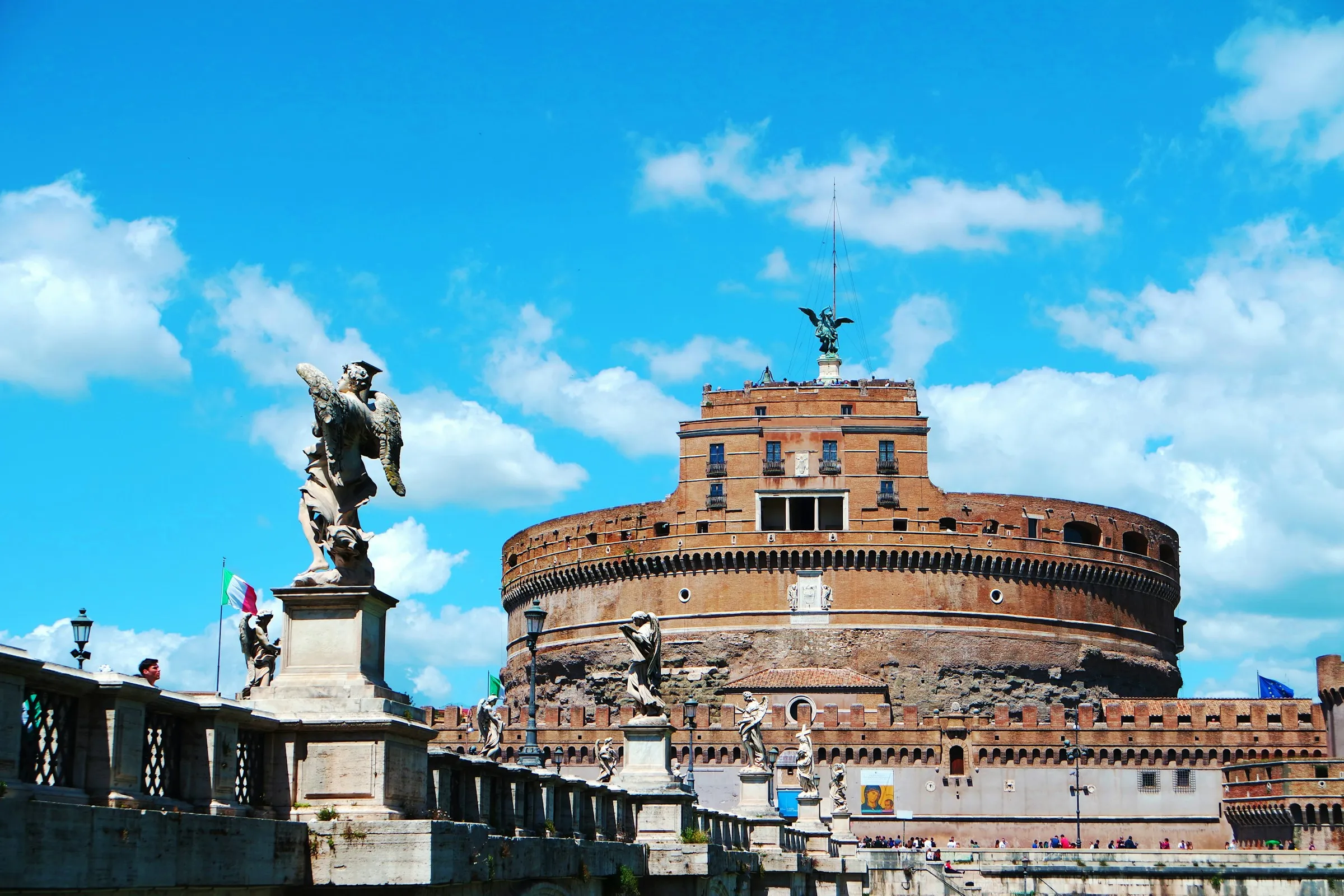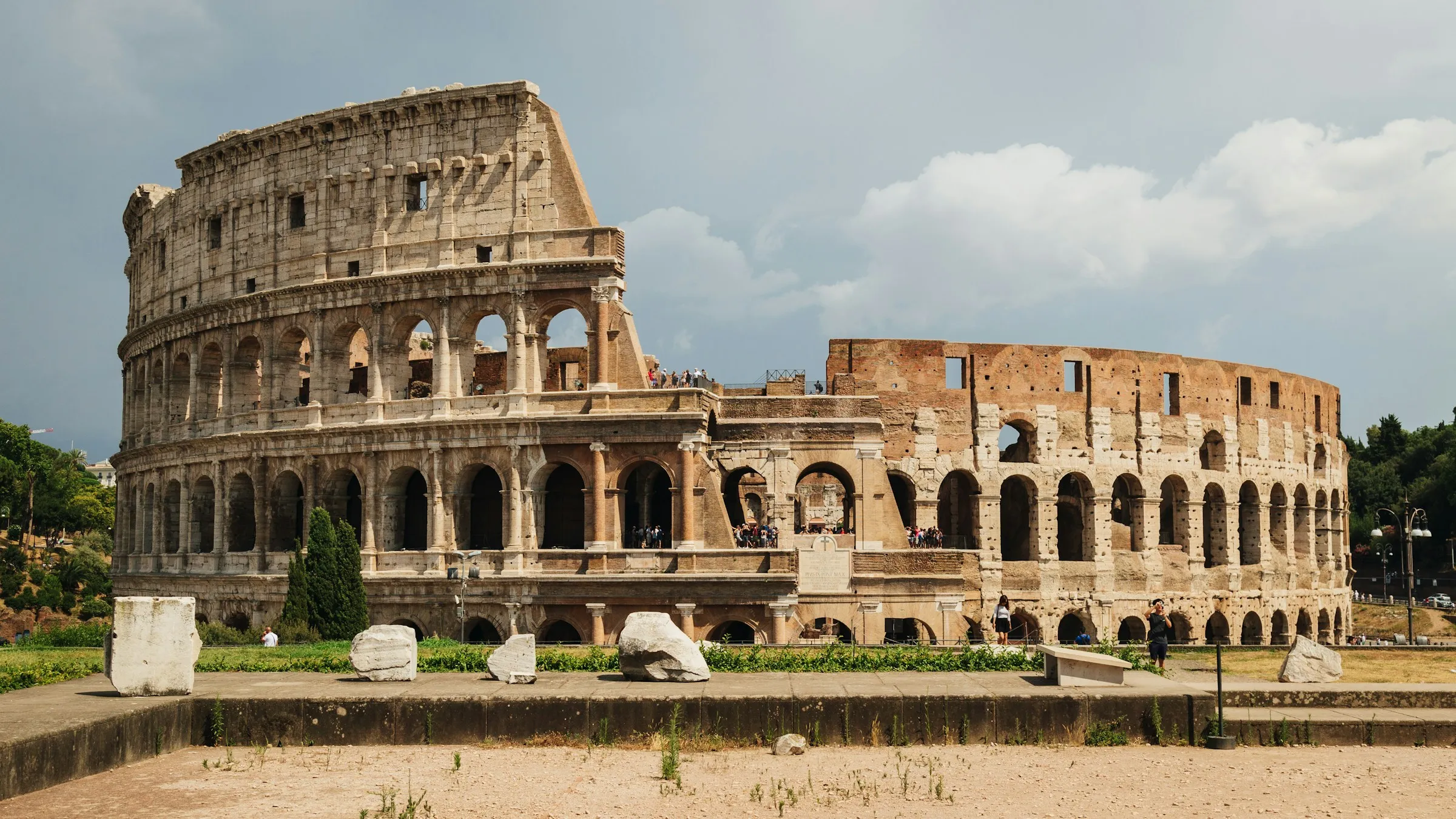The Roman Forum, once the political, religious, and commercial hub of ancient Rome, lies between Palatine Hill and Capitoline Hill. This remarkable archaeological site is a testament to the grandeur of Roman civilization. In this article, we delve into the history, highlights, and visitor information for the Roman Forum.
Essential Information About the Roman Forum
History of the Roman Forum
The history of the Roman Forum dates back to the late 7th century BCE. Initially a marshland, it was gradually transformed into a public square thanks to the construction of a drainage system known as Cloaca Maxima. During the Republican era, it became the political nucleus of Rome, while in the Imperial era, magnificent structures were erected. Temples, public buildings, and monuments lined the area, making it the epicenter of ancient Roman society.
Significance of the Roman Forum
The Roman Forum was not just a square; it was central to ancient Rome’s politics, law, and social life. It housed the Senate and served as a venue for significant political decisions. Military victory parades, public trials, speeches, and other civic activities also took place here, deeply intertwining it with daily life in Rome.
Layout of the Roman Forum
The Roman Forum is centered around a large rectangular plaza surrounded by important structures. Temples, public facilities, and monuments are intricately arranged here, showcasing the pinnacle of ancient Roman architectural ingenuity.
Highlights of the Roman Forum
Temple of Saturn
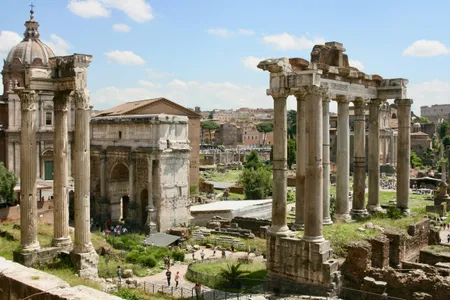
One of the oldest temples built during early Republican times. It also functioned as Rome’s treasury and played a vital role in economic matters.
Arch of Septimius Severus
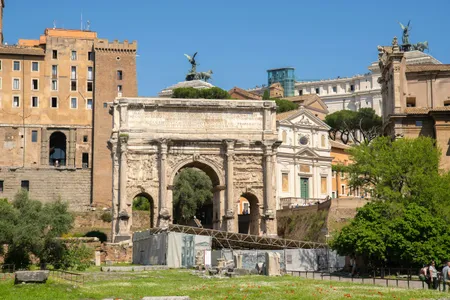
This grand triumphal arch was constructed in 203 CE to commemorate victories against the Parthians. Its detailed reliefs depict scenes from battles and religious ceremonies.
Temple of Vesta
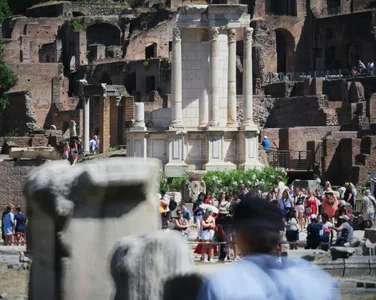
A circular temple dedicated to Vesta, goddess of hearth and home. A sacred flame was perpetually kept burning here.
Basilica of Maxentius
Built in the early 4th century CE, this basilica was one of the last major constructions in ancient Rome. Its vast interior space demonstrates advanced Roman architectural techniques.
Visiting Information for the Roman Forum
Ticket Details
Tickets can be purchased through official channels:
- FULL EXPERIENCE Ticket: Grants access to both Colosseum and Roman Forum. You can visit the forum on either the day before, same day, or day after your Colosseum visit. €24.
- 24H Ticket: Allows entry to Colosseum and Roman Forum on the same day. €18.
- FULL EXPERIENCE UNDERGROUND Ticket or FULL EXPERIENCE ATTIC Ticket: Includes all benefits of FULL EXPERIENCE tickets plus access to Colosseum underground areas or top floors. €24 each.
Important Notes:
- All tickets require you to select a specific entry time for Colosseum in 15-minute intervals.
- FULL EXPERIENCE UNDERGROUND and ATTIC tickets are highly popular; early reservations are recommended.
- Re-entry is not allowed for any ticket type at the Roman Forum. Plan your visit sequence carefully—especially if visiting both sites in one day.
- A tunnel under a nearby road connects northern areas; this detail is not mentioned on official tickets. Be cautious not to exit accidentally.
Opening Hours
- March 30 – September 30 (2025): 9:00 AM – 7:15 PM
- October 1 – October 25 (2025): 9:00 AM – 6:30 PM
- October 26 (2025) – February 28 (2026): 9:00 AM – 4:30 PM
Closed on December 25 (2025) and January 1 (2026). Last admission is one hour before closing time.
Recommended Duration
The Roman Forum is expansive; allocate at least half a day for exploration.
Access Information
The nearest metro station is Colosseo on Line B. Bus access is also available.
Entrance Points
There are six entrances:
- Arch of Titus Entrance: Closest to Colosseum and metro station.
- Largo della Salara Vecchia Entrance: Northern entrance along a major road.
- Via di San Pietro in Carcere Entrance: Western entrance with scenic views; convenient from Piazza Venezia.
- Trajan’s Column Entrance: Northern entrance near Piazza Venezia stairs.
- Via della Consolazione Entrance: Southwestern entrance.
- Via di San Gregorio Entrance: Eastern entrance.
Tickets are scanned at each entrance followed by security checks.
Tips for Visiting the Roman Forum
- Wear comfortable shoes as walking is extensive.
- Being an outdoor site, check weather conditions before visiting.
- Summers can be extremely hot; bring hats, sunscreen, and water.
- Avoid touching ruins to preserve their integrity.
- Beware of street vendors selling trinkets or pickpockets near entrances.
Nearby Attractions Around the Roman Forum
- Colosseum: Iconic symbol of ancient Rome.
- Palatine Hill: Remains of aristocratic residences from ancient Rome.
- Capitoline Museums: A treasure trove of Roman art.
The Roman Forum offers visitors an unparalleled opportunity to immerse themselves in ancient history. Walk through its majestic ruins and envision life during Rome’s golden age!
